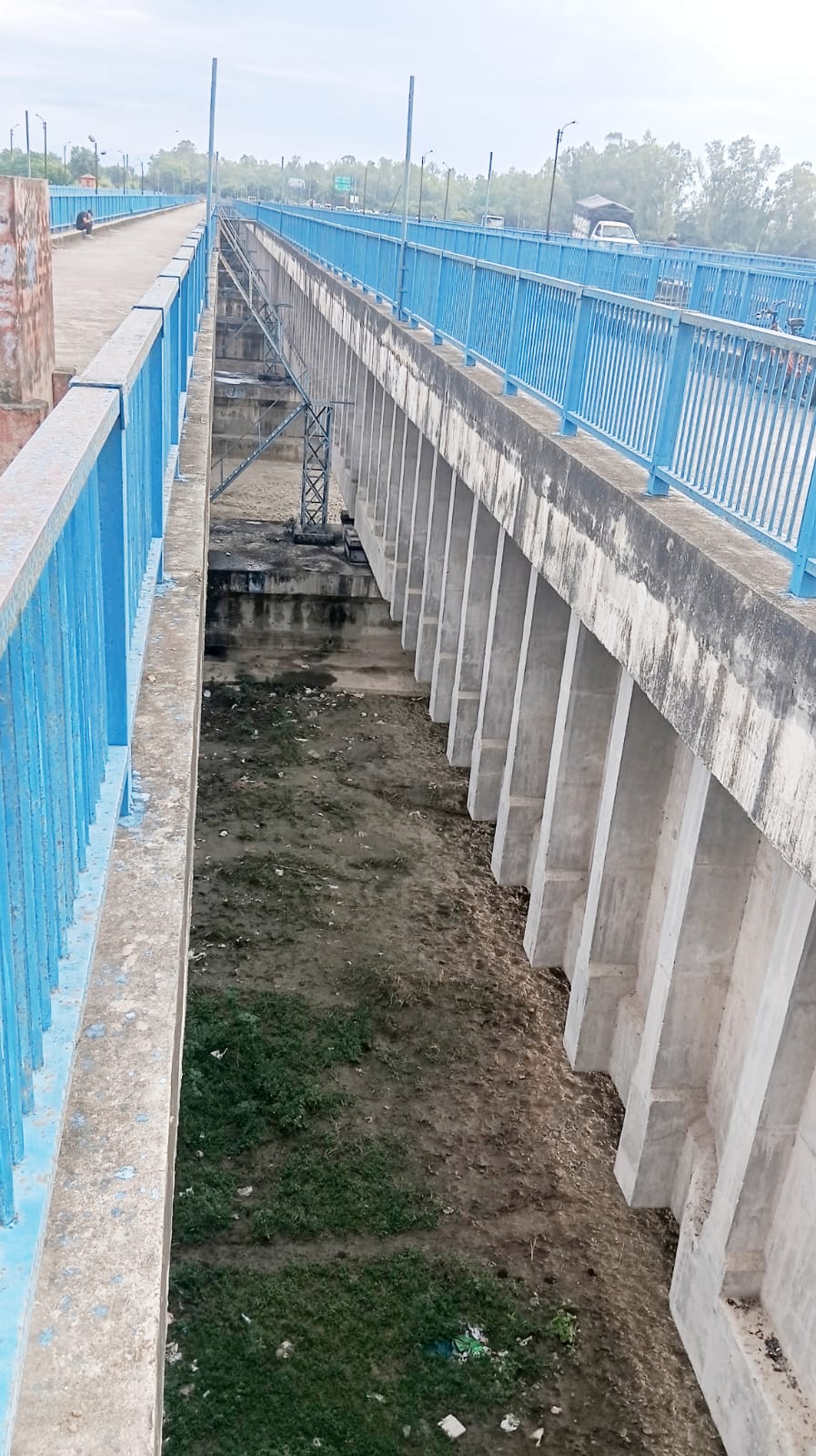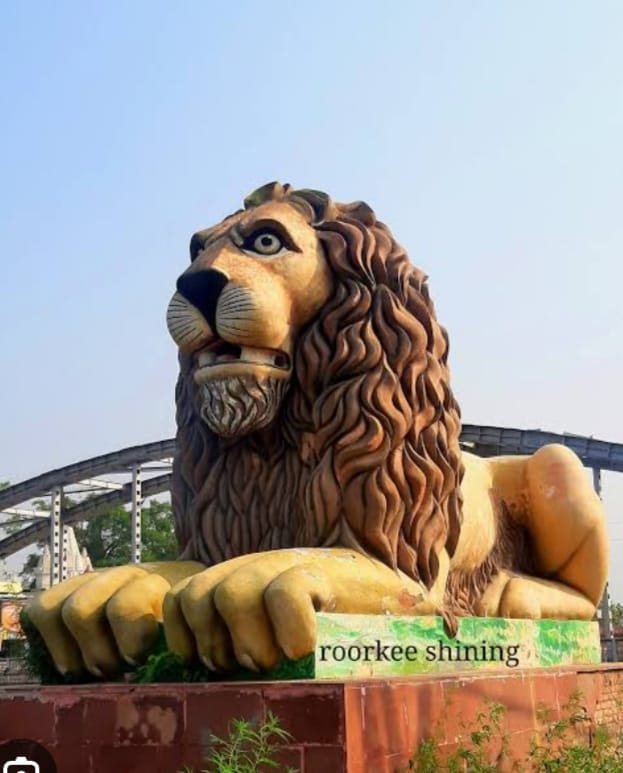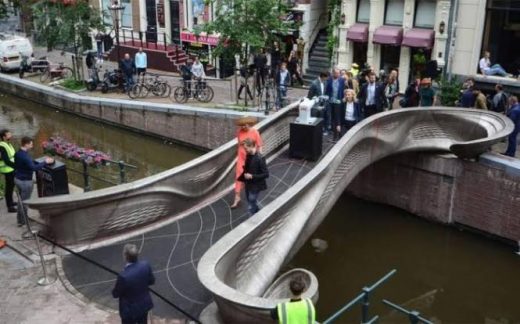By
Kaushal Kishore
Materials Engineer, Roorkee
The new Solani aqueduct on Ganges canal Roorkee was built with prestressed concrete which allows for longer spans and a simple more robust design compared to old bricks, lime- surkhi mortar masonry arches of the old aqueduct, in which 8.5 crores bricks were used, while iron railing used in the sides of two lanes were imported from England. This is interesting to note that materials bringing those days on ship from England to Indian ports take 6-10 weeks via the Suez canal or 3 to 6 months via the longer Cape of Good Hope. Calculate in it also time taken on road from Indian ports to Roorkee.
After retirement from University of now IIT Roorkee I joined M/S Roffe Construction Chemicals Pvt.Ltdd, Mumbai as it’s Chief Concrete Technologists afterwards I became it’s one of the Director.

AQUEDUCT picture taken on 7/10/2025
For the contractor of above aqueduct I designed M-40 grade of concrete with Roffe superpladticizer. Those interested may read my paper by visiting Google site and log in; Civil engineering portal The Ganges canal by Kaushal Kishore.
I had designed numerous concrete mix design almost all cements of India in this I find Utra Tech cement as one of best cement OPC and PPC both With Ultratech cement I had designed numerous concrete mixes from ordinary strength to M-80 grade concrete, self compacting concrete, shot crete concrete, fibre reinforced concrete, fly ash concrete and more There is life after retirement and after retirement I worked for 30 year’s which includes in free time working in home research and testing laboratory and numerous construction sites visits almost all India and outside India. At my age of 92 years I still work for 12 hours daily.
I had never worked for money. In spite of doing so gigantic work what to say about car I even do not have 2 wheeler not any of my house not a single inch of land in this world only pension from IIT Roorkee and few clothes


























please information me ,How can possible to civil engineering work & i am diploma student fresher last sem
Nice site !! I’m now studying in Bogor Agriculture Universiy (Indonesia) and take the civil and enviromental engineering. Here, we studied about civil engineering which is specialized about Rural Infrastructure.
can any send me any ways to know about the construction of Chozha’s Tangore Temple, i searched in many ways, couldn get…….
the concept is the shadow of the tower should not fall in the groung as it is a temple of lord shiva, In the temple you can see some interlocking arrangement it is a good monument and a standing example of good engineering
I need all the details about civil engineering field….what are the requirements for a civil engineer ??? please send me the details about the recent advances in the construction, new types of construction and materials used for the construction……….
the important requirement for the civil engineering during study period is Basic knowledge in all the topics like construction techniques, soil engineering, structural engineering , strength of materials , all other things above imagination and implementation of new ideas for the modern trends in construction…. i hope u ll get it some information about civil engg…
I want to be an engineer someday and I will simplify hard formulas to easier to understand
I need comparative detailed rate analysis of Fly-ash brick masonry (completed item including labour + material ) against conventional BB masonry( completed item).Can anybody send ? Thanks.
what is the difference between design engineer and civil engineer.
civil engineering has different branches it depends if you execute a project it will be a execution engineer. and if you design you will be a design engineer.
i wnt to know more about airport runways.pls.
hi sir..
I have decided to work on “Replacement of sand by quarry dust in concrete:
So i need your suggestions sir and if this topic is worth of doing then i need your help sir….
Please suggest a text book for detailed re inforcing details of building construction
Hi !
glad to study civil engineering subjects !:D
just little bit difficulties about detailed estimation of a project .
i m inspire with indian engineers even i m pakistani! 🙂
can some body help me in my study !!!!!!!!!
plzzzzzzzzzzzzzzz…………
Hi FARHAN! it is advaisable that you look for experts to learn directly from them, it may not be easily learn through this.
dear farhan ,
it is not possible to estimate a work without practical knowledge my advise is to have some practical knowledge and know about basic rates then you can estimate
i gt all details expt some
SUPPER WEBSITE FOR CIVIL ENGG
Hi guys i am doin this civil project i must come up wth a water related model which wil help th water sector help people
I want more information about it. eligibility, duration, college, fees and other. plz co-operate me.
Am happy in studying the course ‘ civil engineering’ i am proud of it. Am a student in federal polytechnic offa, kwara state and am a native of Erin Ile in kwara state. Am now in HND1 first semester. I am intrested in construction engineering but i do not know how dificult, intresting, valuable it is when conpared with other sub-divisional field of civil engineering. Please, i want some one to enlight me on this.
i want 2 know what it takes in terms of finance and manpower, to start a construction company.
What are the softwares that are necessary to learn by a civil engineer for his bright future?
i want to know application of nano technology in civil engineering…..
what is the procedure for registering in civil engineering diploma after 12th commerce..?
You have to clarify the polytechnic entrance exam for admission in civil engg. diploma which will held in june or july in delhi.